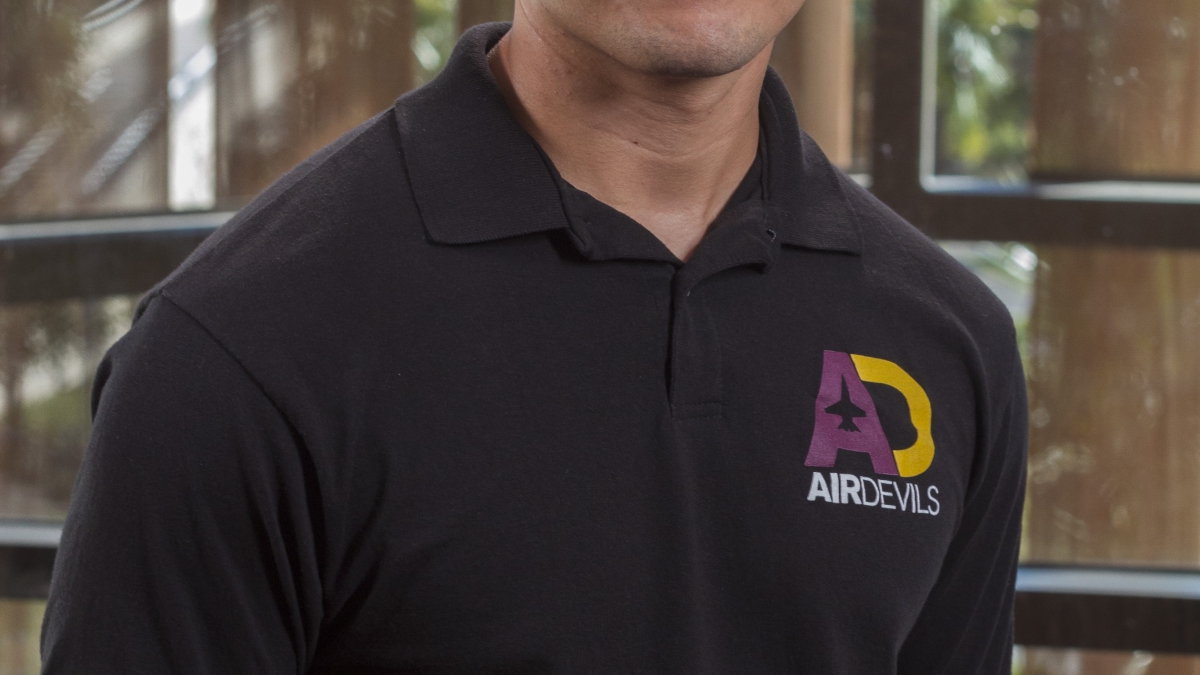Aerospace engineering grad soared in high-flying extracurriculars

Philip Thomas.
Editor’s note: This is part of a series of profiles for fall 2018 commencement. Read about more graduates.
Philip Thomas has always enjoyed solving problems, and engineering allows him to have a hands-on problem-solving experience.
“Engineering provides many unique challenges that can be approached in a variety of fascinating ways,” Thomas said. “In high school, I found I loved working on basic robots and finding ways to control them both autonomously and through human direction. This fueled my interest in programming and mechanical design and inspired me to seek a mechanical engineering degree.”
Once he arrived at Arizona State University, Thomas decided to look into working with drones and airplanes.
“I had never worked with them before, but I discovered I loved working on airplanes,” Thomas said. “This drove me to switch to aerospace engineering.”
As a student in the Ira A. Fulton Schools of Engineering, Thomas took his newly discovered love of airplanes and ran with it. He was heavily involved with the American Institute of Aeronautics and Astronautics student branch and Air Devils, an aerospace engineering student organization.
“I quickly pushed myself into leadership with the Air Devils and was voted in as treasurer my sophomore year and president my junior year,” Thomas said. “As president, I oversaw the first international collaboration of Air Devils with a team from the University of Southampton in the United Kingdom.”
Under Thomas’ leadership, the teams designed and flew a competitive radio-controlled aircraft for the AIAA Design-Build-Fly competition.
Thomas led the AIAA student branch during his junior year and helped secure two mini-grants from the ASU Kern Entrepreneurial Engineering Network to fund two engineering workshops based on the entrepreneurial mindset.
For Thomas, there was no single “aha!” moment in his path through engineering. Instead, it has been a constant series of small steps, successes and mistakes that have helped him navigate life so far.
“I don’t really think there’s a set path for success at all,” Thomas said. “Instead, I try new things, learn about what piques my curiosity and maneuver myself as best as possible to move down the paths that most excite me. Along the way I’ve discovered that life constantly throws curveballs, and I never really know what’s around the corner.”
Today what’s around the next corner for Thomas is obtaining a master’s degree through the 4+1 program where he hopes to study more about weather-based aircraft performance. Beyond that, the sky's the limit.
“I honestly have no idea where I’ll end up or what I’ll end up doing,” he said. “Considering how much my plans have deviated from just four years ago, I’m hesitant to put up a long-term plan of any sort as it’ll almost certainly be pushed into uncharted territory.”
More Science and technology

National Humanities Center renews partnership with Lincoln Center for responsible AI research
The National Humanities Center has announced that Arizona State University's Lincoln Center for Applied Ethics is one of four…

ASU student and hackathon enthusiast explores bridge between humanities, technology
While science and the humanities are seemingly two completely different worlds, the truth is they often go hand in hand. Mannan…

Advanced packaging the next big thing in semiconductors — and no, we're not talking about boxes
Microchips are hot. The tiny bits of silicon are integral to 21st-century life because they power the smartphones we rely on,…